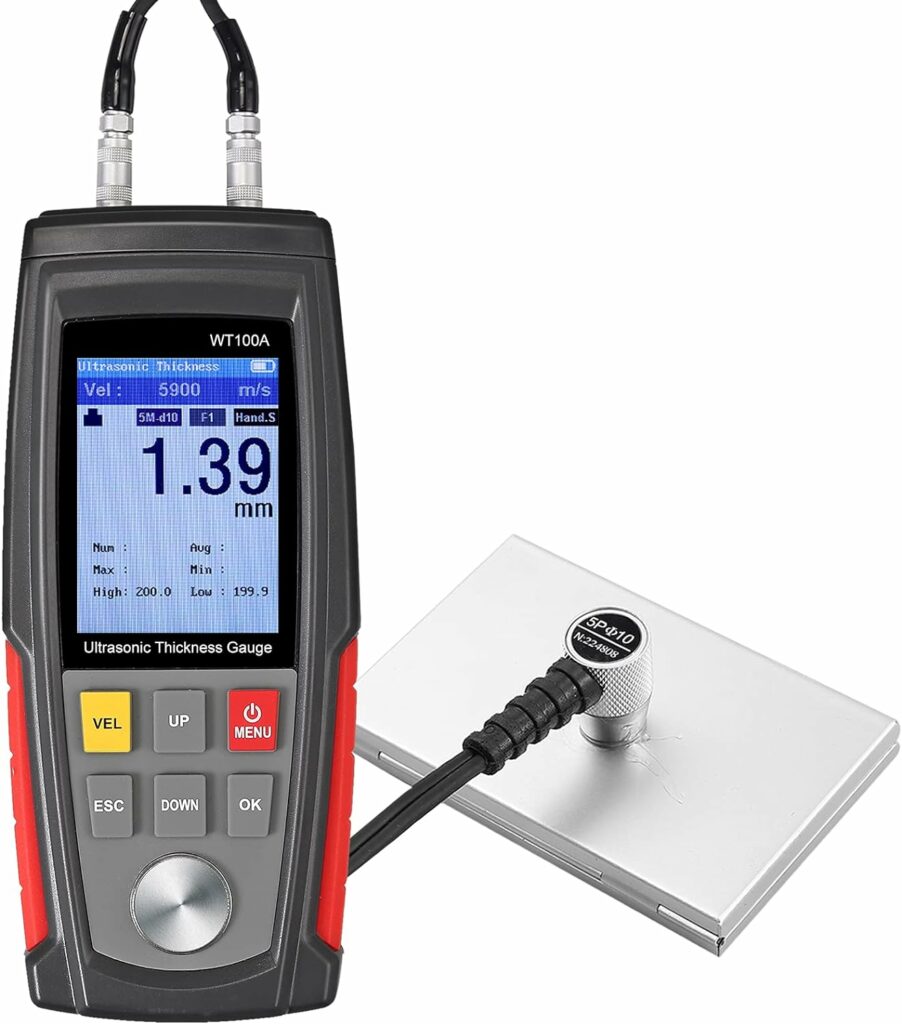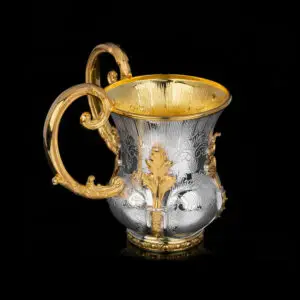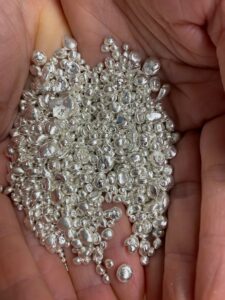
Ultrasonic thickness gauge for testing the thickness of metals
: Let’s start with a recommendation
With the help of this small and simple device at a cost of $100, I detected a fake in a 1000 gram gold ingot worth about $65,000, I find it one of the basic tools in the toolbox of those who trade silver and gold bullion. The device can also help to find a counterfeit of the tungsten core inside the ingot and can also detect a counterfeit in a coating that needs a minimum thickness in order to measure. There are more expensive acquaintances with a high level of accuracy, but for gold bullion dealers it is excellent value for money.
About the technology
An ultrasonic digital thickness gauge is a device used to measure the thickness of materials by using ultrasonic waves.
Here is a brief explanation of how it works:
Creating ultrasound waves: the meter produces high-frequency sound waves using a transducer. This transducer usually consists of a piezoelectric crystal that converts electrical energy into mechanical vibrations, and produces sound waves.
Transmission of ultrasound waves: these sound waves are aimed at the material being measured. The waves travel through the material until they encounter the opposite surface. Reflection of ultrasonic waves: when the ultrasonic waves reach the opposite surface of the material, they are reflected back towards the transducer. The time it takes for the waves to travel to the opposite surface and back is measured.
Thickness calculation: The gauge uses the time of flight of the ultrasonic waves and the speed of sound in the material to calculate the thickness of the material. The speed of sound in a material depends on its density and elasticity, and this information is usually pre-programmed into the meter or input manually. Display and interpretation: the measured thickness is displayed digitally on the gauge screen. Some gauges also provide additional features such as data logging, statistical analysis and alarms for thickness anomalies.
Calibration: Regular calibration is essential to ensure accuracy. Calibration includes testing and adjusting the gauge so that it matches a known standard. This compensates for any changes in the speed of sound due to factors such as temperature and material properties. Applications: Ultrasonic digital thickness gauges are widely used in various industries, including manufacturing, construction and maintenance. They are particularly valuable in applications where non-destructive testing of material thickness is essential, such as corrosion assessment in pipelines, wall thickness measurement in tanks and structural integrity monitoring.
In summary, ultrasonic digital thickness gauges work by sending and receiving ultrasonic waves to measure the thickness of materials. This non-destructive testing method provides a quick and accurate way to estimate the thickness of materials without causing damage.
Note: this ultrasonic digital thickness test is only one of few tests that should be in the protocol of gold and silver bullions trading.
For more details and the possibility of ordering click more

About The Blog
Welcome to “Precious Metals Mechanics—by Ami Gur.” This blog is designed to serve as your expert guide through the intricate world of precious metals. Here,

Deciphering the Elegance: How to Grade and Evaluate Silverware
Deciphering the Elegance: How to Grade and Evaluate Silverware In the world of luxury goods, the art of grading and evaluating is often associated

Silver Surge: Navigating Investment Opportunities in 2024
Silver Surge: Navigating Investment Opportunities in 2024 As we step into 2024, silver investors are greeted with a landscape that continues to offer promising opportunities.

Disclaimer!
The content provided on this website is for informational purposes only and is not intended to be a substitute for professional or financial advice. All

Understanding the Decline in Palladium Prices
INTERESTING POSSIBILITES BY GOLD with CRYPTO-WOW!!! Understanding the Decline in Palladium Prices Introduction Palladium, a precious metal predominantly used in automotive catalytic converters, has seen

Understanding the Gold Karat System
INTERESTING POSSIBILITES BY GOLD with CRYPTO-WOW!!! Understanding the Gold Karat System: History, Percentages, and Stamping Gold has been a symbol of wealth and beauty

